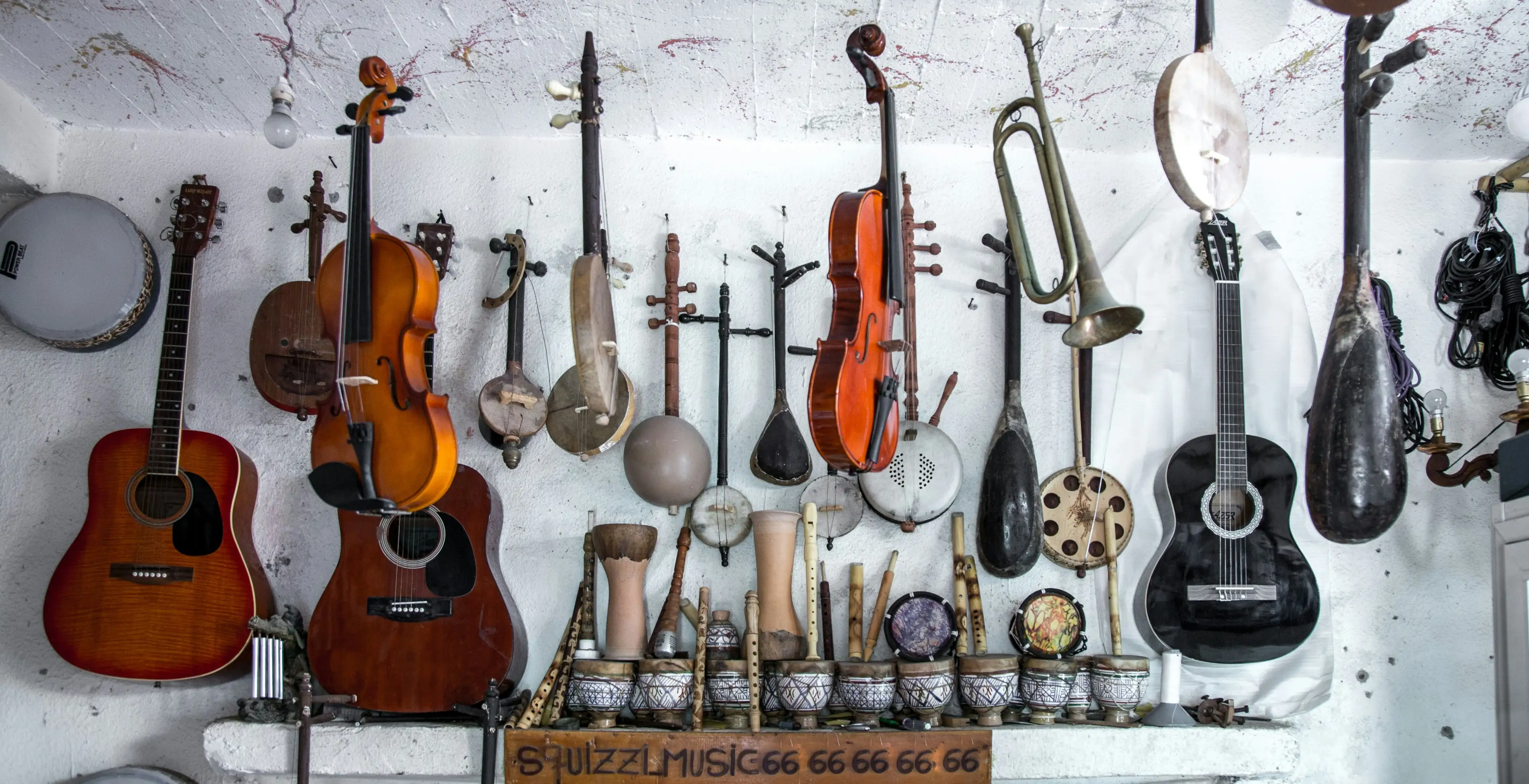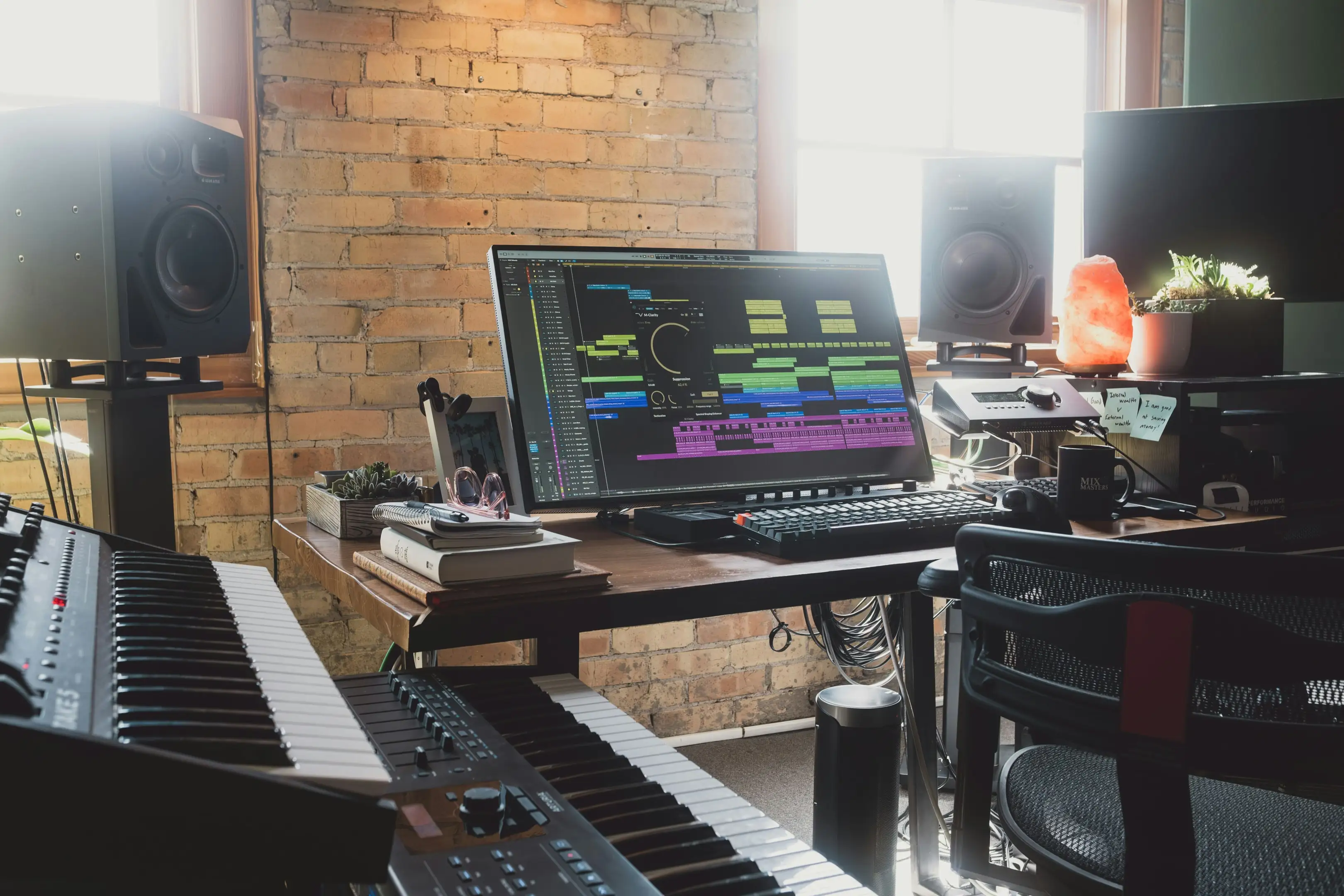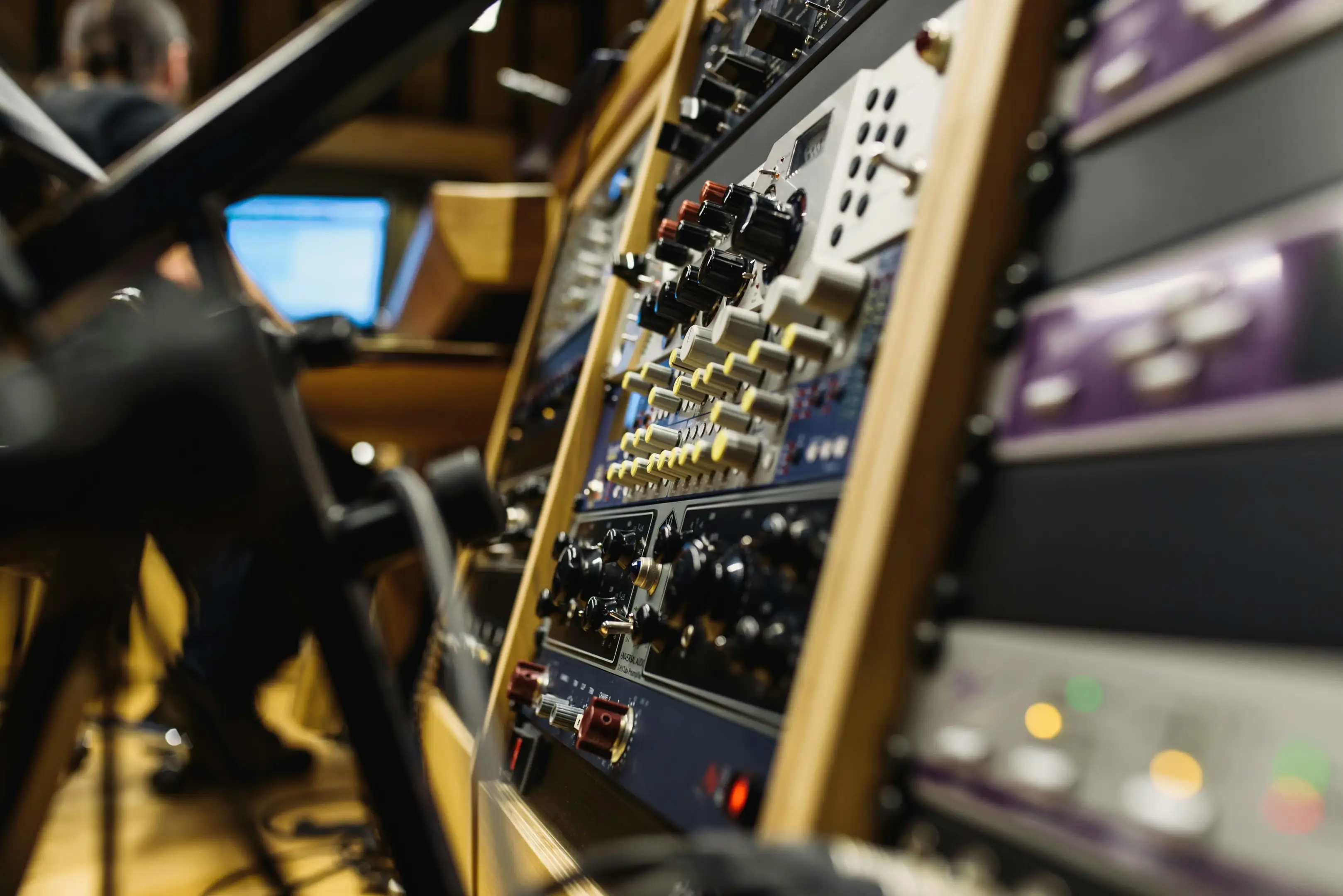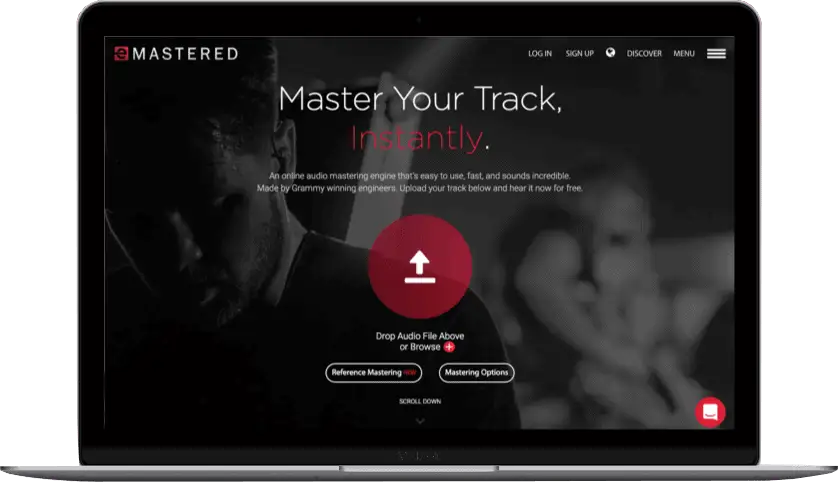You might be under the assumption that creating an instrumental track is easier than making one with vocals. However, a song without vocals requires an instrumental arrangement that can stand on its feet: it has to be engaging, memorable, and evolve organically without any lyrics. That’s hardly an easy task!
There are a couple of reasons why you might want to create instrumentals. The first is that you just like vocal-less tracks, and the second is that you need an instrumental version of a song for karaoke, practice, or a remix.
In this article, we’ll look into how to write music without vocals, regardless of why you need one; whether you want to create the instrumental music of an existing song or make one from scratch, we've got you covered.
Let’s dive in.
A Definition

First off, let’s clarify what an instrumental track is.
Instrumental music is a very broad term that defines music in which vocals are not prominent. In other words, you can have a voice in an instrumental track, as long as the vocal presence is not the leading element of the track.
You’ll find instrumental tracks across all music genres, from movie soundtracks to electronic music, jazz, classical, prog rock, metal, and anything else in between. Perhaps with the exception of pop, which relies heavily on vocals, all other music genres feature examples of instrumental tracks.
How to Make an Instrumental Song
Starting an instrumental track is not that different from starting a "normal" one. All you need to start is an idea that'll drive the song forward. That could be a memorable melody, an evolving beat, or a unique sample.
What differentiates instrumental songs is that they require a more engaging and evolving structure, to keep the listeners hooked even if there are no main vocals.
When you start working on an instrumental song, don't just think about the standard chorus-bridge-verse structure: each element of your song should be carefully designed to highlight various sections and create a sense of momentum. It's a great exercise in music production, if you ask me.
Step 1: The Idea

In music, everything starts with an idea! It could be a melody, a chord progression, a vocal line, or a drum pattern. Whichever it is, that becomes the starting point of your track, something you can build on until you have a full, cohesive piece of music.
Ideas come when you least expect them: in the middle of the night, while watching a movie or cycling. So how do you record ideas when you’re not in the studio? The answer is whichever way you can: with your smartphone, pen and paper, or anything else that’s available to you when the inspiration comes.
Ideas for vocal and instrumental tracks are not that different, with the only exception that the latter won’t have a vocal line that acts as a hook. But that can be replaced by a piano, synth, or guitar melody.
The initial idea might define the tempo, the song's key, or both. From there, you'll start developing your piece.
Step 2: Build The Track

In order to create a professional arrangement for your track, chances are you’ll need a DAW: this type of software is the best way to combine different sound layers into a cohesive song.
An instrumental track can be as simple or as complex as you like, but in general, it’ll feature (most or all of) the following: a drum pattern, a bass line, a chord progression, and a main melody.
Let's assume that your initial idea was a chord progression. From there, you can choose to focus on the rhythmic section and develop the beat and bass groove, or find a memorable melody that fits the chords. Both approaches can work well, so go wherever inspiration takes you.
I usually develop the layers closer to the initial idea first: if my main inspiration comes from drums, the next layer is the bass line, then chords, and finally the main melody. If I have an idea for a melody, I start building the song from the chord progression. In my experience, this makes the song more cohesive and natural, but there’s no rule as to how you can make your song.
In this day and age, the list of instruments you can use for your instrumental track is pretty much endless. Thanks to increasingly powerful DAWs and the thousands of plugins available, you can use any instrument you like at very little (or no) cost. It's almost like having your own band, so use your imagination!
Step 3: Mixing

Now, the hardest part of mixing an instrumental track is that you don’t have vocals as the focal point of your song; that means that every element of your mix needs to be well defined, purposeful, and have its unique place in the soundstage.
Usually vocals, by taking center stage, allow other parts of the mix to be in the background: they can be less defined and simpler just because the voice is the song's core. With instrumental music, you don't have that luxury.
The positive thing is that creating an instrumental track can become a post-production masterclass. You’ll learn everything about leveling volumes and EQing, about compression and time-based effects; all things that’ll help you create a cohesive and professional-sounding mix.
Start from the volume levels and panning. This is the most crucial moment when mixing a track. Make sure every element of your mix is exactly where you want it to be, and listen to your mix on multiple devices; this will give you a complete overview of how your song sounds.
Next, focus on the effects, and take your time to appreciate the importance of every single one you use. Use reverb to glue different elements together, compression and EQ to adjust the soundstage, and all other effects to create a unique signature. Check out our blog section dedicated to post-production if you want to find out more.
Useful Music Theory
You can only go that far without a basic understanding of music theory, especially when it comes to instrumental tracks. Plus, learning a thing or two about how to develop a composition will greatly expand your sonic palette, making you a better musician.
The good thing is that you don’t need to be Mozart to produce a professional instrumental song! All you need is a basic understanding of harmony, rhythm, and song structure.
Thanks to DAWs and plugins, you already have all the instruments and effects you need, so let’s briefly take a look at all the music theory you need to create a catchy instrumental track.
Chords and Harmony
There’s no better way to upgrade your production skills than learning how chords are built and how they function within a key.
Using major and minor chords wisely, and practicing common progressions, will help you connect with your audience and make more engaging music. When used right, simple chord movements can create powerful and unforgettable moods. To find out more, check out the songwriting section of our blog.
The next step is learning how melodies work, which are often what listeners remember the most. Study scales and how to change keys, modes, and how to use intervals so that you can write melodies that “make sense” musically and feel cohesive.
Rhythm and Tempo
Rhythm pushes the song forward, and music can have a groove even when the drums are not present.
To make the most of rhythm, you’ll need to study syncopation , time signatures , the importance of BPM , and the rhythmic patterns that define whichever genre you work on. Overwhelmed? Don’t worry; our blog features plenty of articles dedicated to rhythm, so it’s a great starting point to learn more about groove.
Song Form
Structure is critical even in instrumental tracks, perhaps even more so, since there’s no voice guiding us through the different song sections.
If you’re creating instrumental tracks for singers, you should make them following a traditional form that includes intro, verse, chorus, and bridge. If you’re making instrumental EDM, you’ll need a powerful EDM drop . Even in its most basic form, a song needs to have a beginning and end that feels cohesive and organic. It's the only way to keep listeners engaged and to tell a story through sound.
How to Remove Vocals from an Existing Song
For this final section, let’s take a look at how you can remove vocals from a track. There are many reasons you might want to do this: to practice singing a song, for a karaoke night, for your YouTube channel, or to make funny remixes. Whatever the reason, there are a few ways you can make an instrumental version of a finished song.
The best way is to use a vocal remover , which allows you to isolate the instrumental section by reducing or eliminating the voice layer in a stereo file.
There’s a new AI vocal remover being released almost every month. They’re constantly evolving and improving, so I won’t be reviewing them here. What I can do is tell you which tools work best at the time of writing:
Audacity : Great (and free) option that offers vocal reduction using the Vocal Reduction and Isolation Effect.
Ultimate Vocal Remover (UVR) : Another free and open-source tool that’s as good as it gets. Endlessly customizable and powerful enough for any purpose, UVR is a fantastic option, but you’ll need to spend some time learning how to get the best out of it.
Moises.ai , Splitter.ai , LALAL.AI : and all the others: Upload your audio file, click the upload button, and these programmes will try to remove vocals using AI. Keep in mind that results vary. Some instrumental tracks might still contain faint vocals or artifacts, but usually you can get rid of that in post-production.
eMastered Vocal Remover: Finally, there's our very own vocal remover tool that has the ability to isolate vocals specifically, leveraging technology and insights from eMastered's other product offerings. Our tool will give you crisp sounding instrumental and vocal only audio files ready for your needs.
Final Thoughts
Regardless of why you want to make a song without vocals, getting the instrumental part right might well be the factor that turns your passion into a professional career. The audience will hear your production skills, and artists will want to collaborate with you, all because you can create engaging music without the support of a singing voice.
Choose your instrumentation wisely (or get a MIDI keyboard and download all the plugins you need), learn as much as you can about music theory, and have fun!





